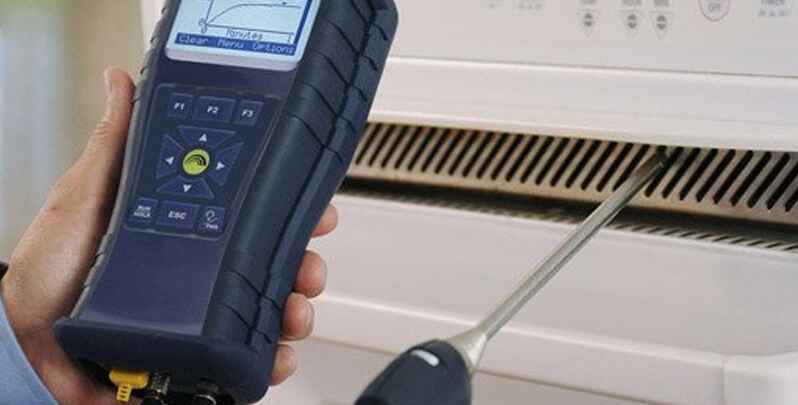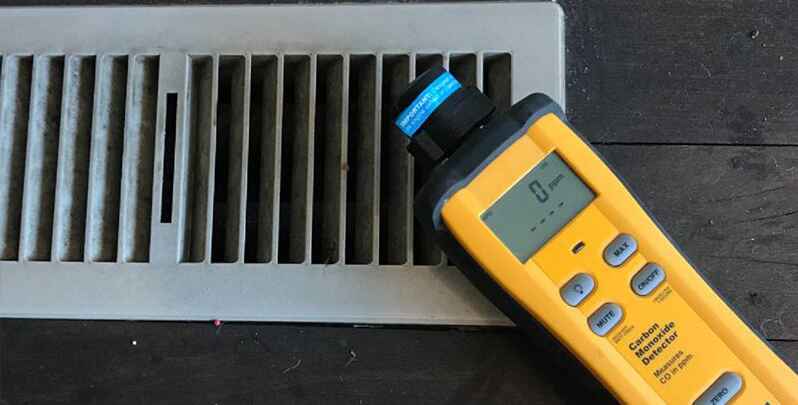Air conditioning systems have become a cornerstone of modern homes, providing relief from sweltering heat. However, a hidden danger often goes unnoticed: carbon monoxide leaks from AC units.
In this article, we’ll explore how to prevent carbon monoxide poisoning and how to detect if your AC leaks these toxic fumes. By understanding the signs of carbon monoxide poisoning and taking preventive measures, you can ensure the well-being of your family and enjoy a comfortable living space.
What is Carbon Monoxide?
Burning fuels like oil, coal, and wood incompletely forms the toxic gas carbon monoxide (CO).
This gas is especially concerning because it’s odourless and tasteless, making it nearly impossible to detect without proper equipment. Sources of carbon monoxide in a home include furnaces, water heaters, fireplaces, and, yes, even HVAC systems like air conditioners.
The most common symptoms of preventing carbon monoxide poisoning danger lies in its affinity for binding to hemoglobin in our red blood cells, reducing its capacity to carry oxygen. Even low levels of CO exposure can lead to symptoms like headaches, dizziness, nausea, confusion, and, in severe cases, death.
Why Can AC Units Leak Carbon Monoxide?
Various components in an air conditioning system cool and circulate air. Certain circumstances can cause AC units to leak, even though they are not designed to generate any sources of carbon monoxide. These include faulty installation, deteriorated parts, or improper maintenance.
Suppose combustion gases from a malfunctioning furnace or water heater share the same ventilation system with the AC. In that case, carbon monoxide potentially enters the air conditioning ducts and spreads throughout your home. Common causes of CO leaks in air conditioners include cracked heat exchangers, damaged flue pipes, and blocked ventilation pathways.
Signs Your AC Might Be Leaking Carbon Monoxide
Detecting a carbon dioxide and carbon monoxide leak from your AC ensures your safety. Keep an eye out for these telltale signs:
- Strange odours: If you notice unusual, pungent smells while your AC or gas stove is running, it could indicate that your gas or fuel-burning appliances release combustion gases.
- Unusual sounds: Unexplained rattling, hissing, or banging noises could indicate a problem within the system that may lead to CO leaks.
- Health symptoms: If you experience frequent headaches, dizziness, nausea, or flu-like symptoms that improve when you leave your home, CO exposure might cause health problems.
- Increased humidity: Excessive humidity, high oxygen levels, and other symptoms could point to a potential CO leak.
If you suspect a CO leak, take immediate safety precautions, such as opening windows and doors and leaving the premises.
Steps to Confirm a Carbon Monoxide Leak
To confirm a carbon monoxide leak, follow these steps:
- Turn off the AC: If you suspect a leak, switch off your air conditioner to prevent further circulation of potentially contaminated air.
- Ventilation check: Open windows and doors to allow fresh air to enter your home. Proper ventilation can help dissipate the gas and reduce its concentration.
- Carbon monoxide detector: Install CO detectors on every level of your home, especially near bedrooms. These devices can sound an alarm when CO levels become dangerous. If the alarm sounds, leave the building and call for professional assistance.
Remember that only a trained HVAC technician can accurately diagnose and repair a CO leak. Professional inspection is vital to ensure your safety.
How to Prevent Aircon Carbon Monoxide Leaks
Prevention is critical to a licensed technician who correctly installs your ACese preventive measures:
- Regular AC maintenance: Schedule routine maintenance with a professional technician to inspect and clean your system. It can identify potential issues before they become hazardous.
- Proper installation: Ensure a licensed and qualified technician correctly installs your AC. A well-installed system minimises the risk of unintentional CO poisoning or natural gas leaks.
- Carbon monoxide detectors: Install CO detectors as a first line of defence. These devices provide early warnings and can save lives.
- Professional HVAC inspections: Regular HVAC inspections can catch problems early and prevent CO and odourless gas leaks from occurring.
These steps can significantly reduce the risk of carbon monoxide leaks and help maintain a safe indoor and outdoor use environment.
What to Do if You Suspect a Carbon Monoxide Leak
If you suspect a carbon monoxide leak from your AC, follow this action plan:
- Evacuate the premises: Leave your family members’ home immediately. Get to fresh air and away from the potential source of the leak.
- Call emergency services: Dial your local emergency number (000) to report the suspected CO leak. They will dispatch trained professionals to assess the situation.
- Ventilate the area: Open windows and doors to the closed space to allow fresh air to circulate and dilute the gas and oxygen concentration in the enclosed space.
- Seek medical attention: If you or anyone else experiences symptoms of CO poisoning, seek medical help promptly.
Carbon will also be released at severe, high levels of carbon monoxide, and exposure to carbon monoxide can be life-threatening, so swift action is essential. Authorities must declare your home safe from carbon monoxide before you re-enter it.
The Role of Professionals in Carbon Monoxide Safety
Professional technicians play a crucial role in ensuring carbon monoxide safety. They train to:
- Identify leaks: HVAC professionals can detect even minor leaks that might go unnoticed by untrained individuals.
- Perform thorough inspections: Regular inspections can catch potential issues before they escalate, preventing CO leaks.
- Provide expert repairs: A professional technician can safely and effectively repair the problem to eliminate the risk if a leak is detected.
- Ensure proper ventilation: Technicians can ensure your ventilation system works correctly at high levels, minimising CO accumulation chances.
- Install CO detectors: Professionals can strategically install carbon monoxide detectors in enclosed areas for maximum effectiveness.
Stay Informed All the Time
Staying informed about the signs and symptoms of carbon monoxide poisoning and leaks from your air conditioning system is critical to home safety. You can protect yourself and your loved ones by recognising the signs and symptoms of carbon monoxide poisoning, taking preventive measures, and knowing how to respond in case of a leak.
Regular maintenance, proper installation, and professional inspections are your allies in preventing CO leaks. Always prioritise safety, and remember that swift action and vigilance are your best defences regarding carbon monoxide exposure. Enjoy the comfort of your air-conditioned home with confidence, knowing that you’ve taken the necessary steps to keep it safe and healthy.
In conclusion, being aware of the signs and potential risks associated with carbon monoxide leaks from your air conditioning system is vital for the safety of your home and family.
You can ensure a safer and more comfortable living environment by regularly maintaining your AC unit, installing carbon monoxide detectors, and knowing what to do in case of a leak. Remember, prevention and prompt action are the keys to safeguarding your loved ones regarding carbon monoxide. Stay safe and enjoy the benefits of your air conditioner with peace of mind.
Please note: This information is provided for advice purposes only. Regulations differ from state to state, so please consult your local authorities or an industry professional before proceeding with any work. See our Terms & Conditions here.



